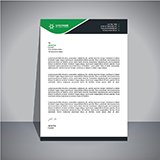Insurance agents always face the possibility that they will make errors that can result in legal action from one of their clients or carriers. Sometimes, though, a third party who isn’t even a client can accuse them of failing to obtain the proper coverage.
An agency in Arizona insured a construction company that had a contract with a home builder to work on a residential development. The agency obtained commercial general liability insurance for its insured through one of its carriers, and separate liability coverage from a different carrier through an excess and surplus lines brokerage. The first policy included a blanket additional insured endorsement that covered any person or organization the named insured was required by a written contract or agreement to include as an additional insured. The E&S policy contained an additional insured endorsement with a schedule. It covered the person or organization shown in the schedule with respect to liability arising out of the named insured’s work for that person or organization. The words “as per written contract” were entered in the schedule.
The insured’s contract with the home builder required it to comply with “all rules, regulations and requirements” of the builder. It also required the insured to indemnify the builder from any claims or losses resulting from the insured’s negligence. Lastly, it required the insured to provide the builder with certificates of insurance.
In annual letters to the insured, the home builder described its minimum insurance requirements and stated that the CGL policy must name it as an additional insured. The insured had the agent issue certificates of insurance naming the builder as additional insured, with a copy of the blanket additional insured endorsement attached.The agent also issued separate certificates as evidence of the coverage from the E&S carrier. These certificates named the builder as an additional insured “as per written contract.”
The city government sued the home builder for problems with the development’s streets and sidewalks. The builder then sued the insured and other contractors on the project for reimbursement of repair and legal costs. Later, several owners of the homes in the development sued the builder for alleged construction defects. The court opinion does not mention the amount of the damages, but construction defects involving several homes likely ran to seven figures.
The builder submitted the claims to both of the insured’s carriers. However, the carriers denied coverage, saying that the builder was not an additional insured because its contract with the insured did not require the coverage.
The builder sued both carriers, the agency and the E&S brokerage for breach of contract, negligence, negligent misrepresentation and fraud. The carriers said the builder did not qualify as an additional insured. The agency argued that it had no duty to the builder because it wasn’t the agency’s client, and that all information it provided was accurate. The builder settled out of court with the E&S carrier, but a trial court ruled in favor of the other carrier, the agency and the E&S brokerage. The builder appealed.
The appeals court said that a jury must determine whether the contract required additional insured coverage. However, it upheld the ruling in favor of the agency and E&S brokerage. Neither entity owed a duty of care to the builder, the court said, because it was not their client. It also noted that the certificates stated that they were issued as a matter of information only and conferred no rights on the holder. Thus, neither entity was negligent and neither misrepresented the terms of the policies. Lastly, the court said there was no fraud because neither entity made a false statement.
The agency won this case because it followed good practices regarding certificates of insurance. It issued standard forms with disclaimers on them. It attached copies of the additional insured endorsements. It stated in the certificates that additional insured coverage was dependent on a written contract, as the endorsements stated. In short, it told the builder exactly what the policies said and nothing more.
Agencies that follow this one’s example will find it easier to defeat errors and omissions claims. By practicing good loss control, they will also make these claims infrequent.















